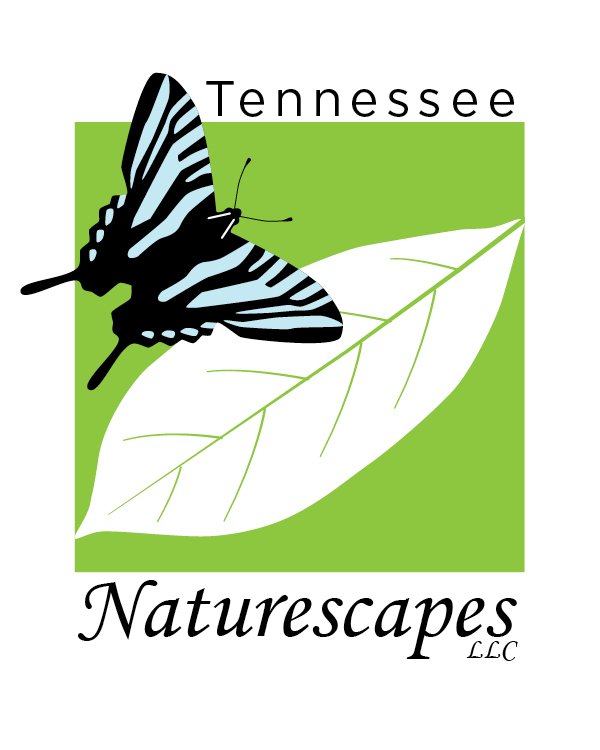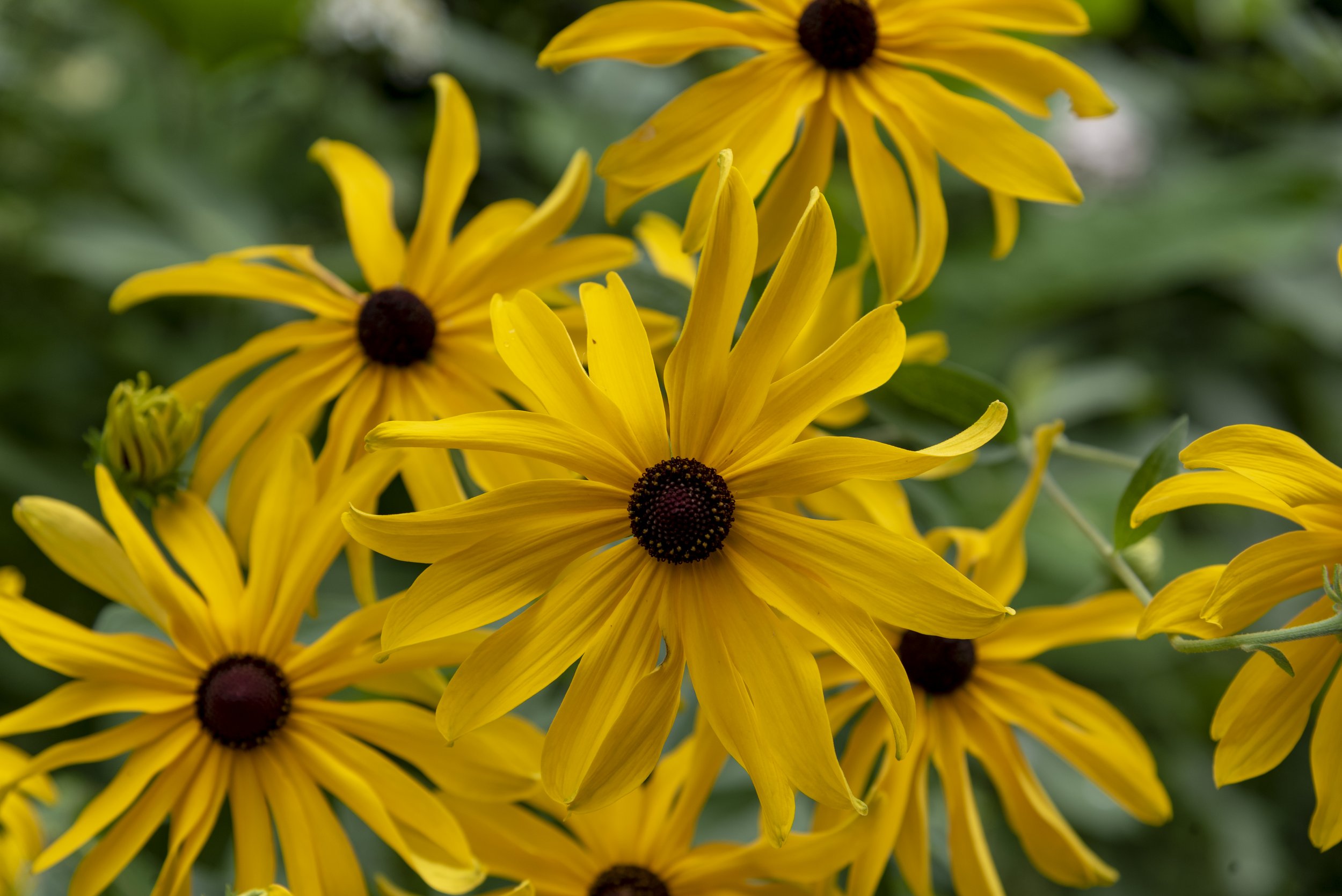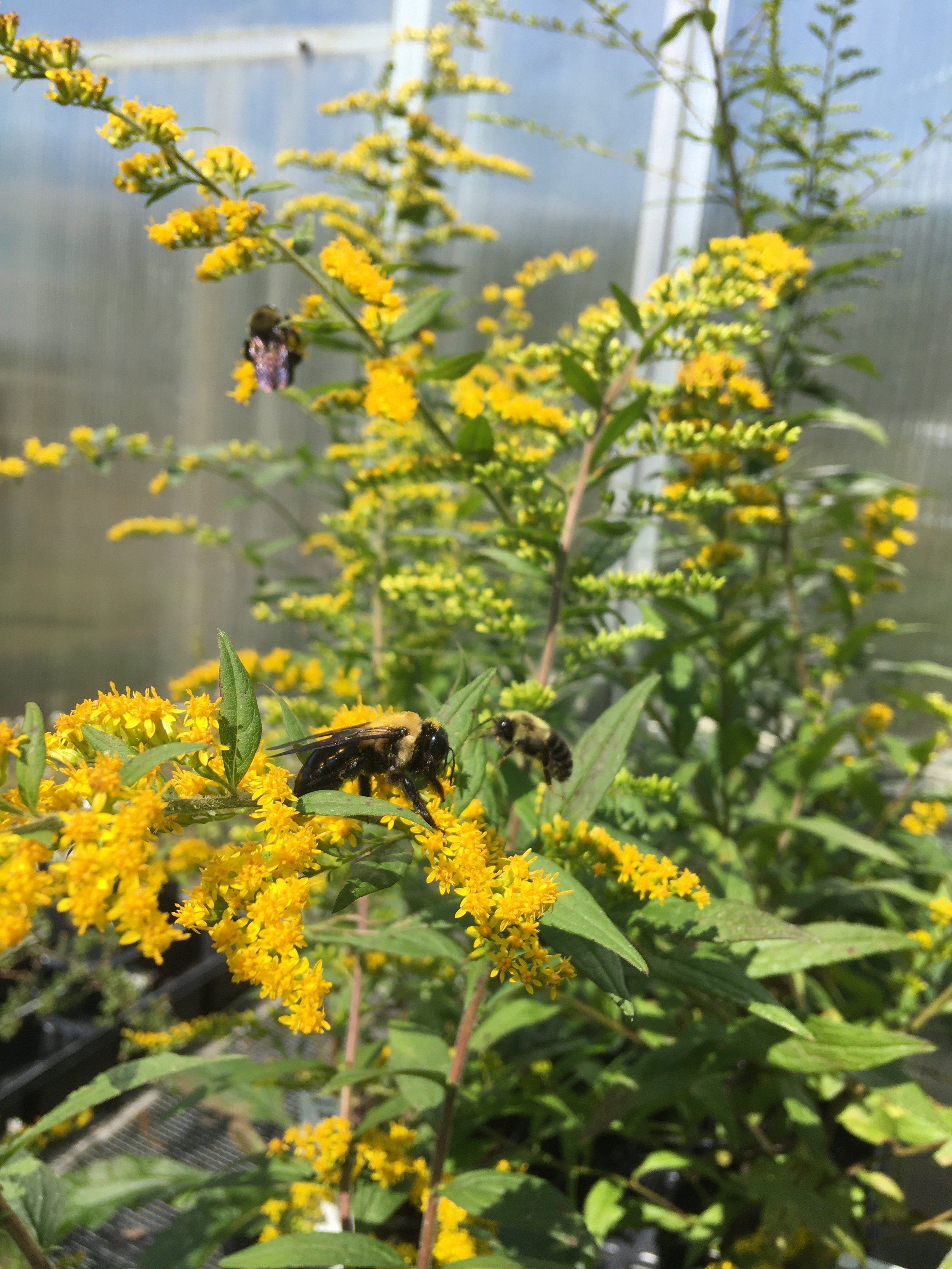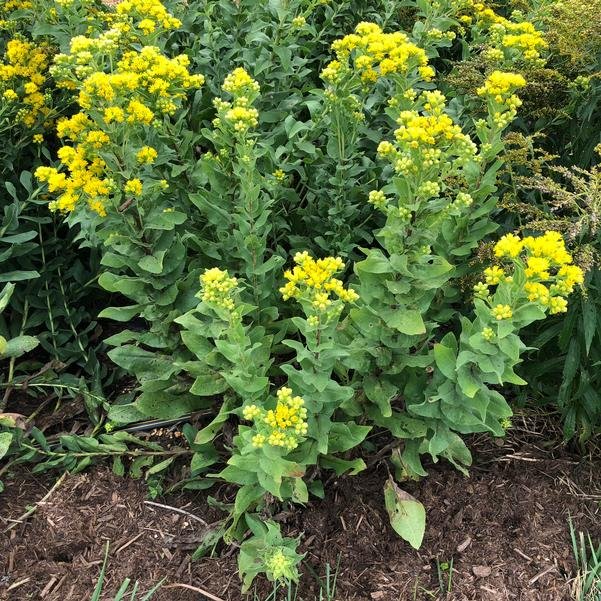What BLOOMS IN Fall
And what we have in stock right now or will have! Consider adding these fall blooming native plants to your garden to attract pollinators and Monarch butterflies for example, to your garden!
For those still doubting about getting Goldenrods (Solidago sp.) . They do not cause allergies. In fact their pollen is sticky. Ragweed (Ambrosia sp.) is the culprit but since it’s pretty inattentive we won’t see it - but we see the magnificent bright goldenrods! If you don’t have any goldenrods yet, now is the time. They are one of the best pollinators plants for insects in fall.
read more about Goldenrod Allergy Myth:
https://hgic.clemson.edu/how-to-tell-the-difference-between-goldenrod-and-ragweed/
Panicled Aster (Symphyotrichum lanceolatum)
GARDEN SITE: ☀️-⛅ Average- Moist-Wet soil. Drought tolerant and can withstand poor soil quality.
SIZE: ⬆2-5 ft. ↔1.5-2 ft.
FLOWERS: White🌸July-October
WILDLIFE: Attracts butterflies and bees
LARVAL HOST TO: Pearl Crescent butterfly.
ZONE: 3-9
Valuable long blooming addition to moist meadows, shoreline restorations and raingardens. An excellent pollinator plant. Forms colonies. One of the most aggressive of asters but will out-compete non-native plants!
New-England Aster (Symphyotrichum novi-belgii) SOON
GARDEN SITE: ☀️- ⛅. Average, medium-dry-soil.
SIZE: ⬆2-3 ft. ↔3 ft.
FLOWERS: Purple-Pink August-October
WILDLIFE: Attracts late season Bees and Butterflies.
LARVAL HOST TO: Silvery Checkerspot and Pearl Crescent butterfly
ZONE: 4-8
Great fall blooming plant and nectars source! Spreads by its long rhizomes. Clay Soil, Drought and Deer Tolerant.
Blue Wood Aster (Symphyotrichum cordifolium)
GARDEN SITE: ☀️-🌤️ Avg-Dry-Medium Soil.
SIZE: ⬆2-4 ft. ↔1-2 ft.
FLOWERS: Blue🌸 August-September.
WILDLIFE: For Butterflies and Bees.
HOST PLANT TO: Pearl Crescent butterfly
ZONE: 3-8
Shade tolerant. Rabbit, Deer and Drought Tolerant. Spreads slowly by rhizome to form a nice patch. Often abundantly self-seeds in the garden if not deadheaded. For open shade gardens, native plant gardens, cottage gardens or butterfly gardens.
Raydon’s Favorite Aromatic Aster (Symphyotrichum oblongifolium 'Raydon's Favorite')
GARDEN SITE: ☀️-🌤️ Average, Dry to Medium, Well-drained Soil.
SIZE: ⬆2-3 ft.↔3 ft.
FLOWERS: Violet-Blue-Yellow🌸August-September
WILDLIFE: Attracts Butterflies and Bees
LARVAL HOST TO: Pearl Crescent butterfly
ZONE: 5-8
A highly rated garden performer that is widely adapted and grows in a variety of soil types. Reliable and extremely showy native cultivar. Good for mass fall bloom plantings. Deer, Clay soil and Drought Tolerant
Late Purple Aster (Symphyotrichum patens)
GARDEN SITE: ☀️-⛅ Medium-moist- dry, well-drained soil.
SIZE: ⬆2-3 ft. ↔2 ft.
FLOWERS: Showy fragrant, Blue-Purple🌸August-October
WILDLIFE: For 🐝+🦋s.
ZONE: 4-8
Also called clasping aster. Extremely showy flowers in late summer to fall. Occurs naturally in rocky or sandy open woods. Has graceful arching stems. High drought and salt tolerance
Brown-Eyed Susan (Rudbeckia triloba) SOON
GARDEN SITE: ☀️ Average, Moist soil. Tolerates light shade
SIZE: ⬆2-3 ft. ↔1-1.5 ft.
FLOWERS: Yellow with brown center🌸July-October
WILDLIFE: Great pollen and nectar producer. Attracts many pollinators
LARVAL HOST TO: Silvery Checkerspot
ZONE: 4-8
Excellent addition to naturalized areas, wildflower meadows, prairies, cottage gardens, native plant gardens and borders. Freely self-seeds and will usually remain in the garden and naturalize through self-seeding. Deer and Drought tolerant.
Sweet Coneflower (Rudbeckia submentosa)
GARDEN SITE: ☀️ Medium moisture soil. Tolerates hot and humid summers and some drought.
SIZE: ⬆3-5 ft. ↔1-2 ft.
FLOWERS: Yellow🌸July-October
WILDLIFE: For pollinators and birds
LARVAL HOST TO: Silvery Checkerspot
ZONE: 4-8
Good Cut Flower. Consider for borders, cottage gardens, prairies, meadows, native plant gardens or naturalized areas. Good cut flower.
Schweinitz's Sunflower (Helianthus schweinitzii)
GARDEN SITE: ☀️-⛅Avg-Dry Soil.
SIZE: ⬆3-6.5 ft. ↔ 3 ft.
FLOWERS: Bright Yellow 🌸 Aug-Oct
WILDLIFE: Attracts Bees, Birds and Butterflies
LARVAL HOST TO: Silvery Checkerspot
Shallow, Rocky Soil and Poor Soil Tolerant. This plant is one of the rarest species of sunflower in the United States
ENDANGERED SPECIES
We are only allowed to sell this species within the state of Tennessee
Three-Nerved Joe-Pye (Eutrochium dubium)
GARDEN SITE: ☀️-🌤️Moist, fertile, humusy soil.
SIZE: ⬆3-5 ft. ↔2-4 ft.
FLOWERS: Pink-purple🌸July-Sept.
WILDLIFE: For butterflies, bees and birds
LARVAL HOST TO: Several moths including Ruby Tiger Moth.
ZONE: 5-8
Deer, Clay Soil, Wet Soil Tolerant. Among the smallest species within the genus. Straight species of the famous 'Little Joe'. Good resistance to powdery mildew. Well suited for garden settings.
Wrinkleleaf Goldenrod (Solidago rugosa)
GARDEN SITE: ☀️-🌤️ Medium to Wet Soil. Clay Soil and Wet Soil Tolerant.
SIZE: ⬆3-5 ft. ↔2-3 ft.
FLOWERS: Golden, July- November.
WILDLIFE: Attracts Bees and Butterflies.
LARVAL HOST TO: Host plant for 122 lepidoptera larvae, including brown-hooded owlet and goldenrod owlet moths
ZONE: 4-9
Spreads by rhizomes forming colonies. Easy to grow. Deer tolerant. The straight species of the popular 'Fireworks' goldenrod. Instant bee magnet!
Old Field Goldenrod (Solidago nemoralis) SOON
GARDEN SITE: ☀️ Average-Dry-Medium Soil. Tolerates light shade.
SIZE: ⬆3-5 ft. ↔2-3 ft.
FLOWERS: Golden🌸July- November.
WILDLIFE: Attracts Bees and Butterflies.
LARVAL HOST TO: Host plant for 122 lepidoptera larvae, including Wavy-lined Emerald
ZONE: 3-9
Good choice for challenging areas with poor soils where other types of plants are difficult to grow. Typically not planted in formal garden settings because of spreading rhizomatous growth and self-seeding.Deer, Drought, Dry Soil and Shallow-Rocky Soil tolerant.
Cardinal Flower (Lobelia cardinalis)
GARDEN SITE: ☀️-⛅ Medium to Wet Soil that should never dry out.
SIZE: ⬆2-4 ft. ↔1-2 ft.
FLOWERS: Scarlet Red July-September
WILDLIFE: Attracts Hummingbirds and Butterflies.
ZONE: 4-9
Best in moist areas of woodland/shade gardens, wet meadows, water gardens, rain gardens, along streams or ponds. Rabbit, Deer and Wet Soil tolerant.
Obedient Plant (Physostegia virginiana)
GARDEN SITE: ☀️ Moist to Wet Soil.
SIZE: ⬆3-4 ft. ↔2-3 ft.
FLOWERS: Pink-White June-September
WILDLIFE: Attracts Hummingbirds and Bees
LARVAL HOST TO: Henry’s Elfin butterfly
ZONE: 3-9
Good choice for Borders, Cottage gardens, Wild gardens and Meadows. Can be an aggressive spreader in ideal conditions. Deer and Clay Soil Tolerant.
Big Bluestem (Andropogon geraldii)
GARDEN SITE: ☀️ Average, Dry to medium, well-drained soil
SIZE: ⬆2-3 ft., ↔2-3 ft.
FLOWERS: Purplish Red inflorescences September- February
WILDLIFE: Songbirds and small mammals eat seeds
ZONE: 4-9
Effective in border rears or native plant gardens as a screen or accent. Slow to establish, but, once established, has excellent drought tolerance and is easy to maintain. Deer, Drought, Erosion, Dry Soil, Black Walnut, Air Pollution tolerant.
Ladies’ Tresses Orchid (Spiranthes odorata)
GARDEN SITE: ⛅ Boggy, moist, acidic soil.
SIZE: ⬆9-18 in. ↔ 9-12 in.
FLOWERS: Fragrant, spiral-like, White, Sept.-Oct
WILDLIFE: Attracts Bees
ZONE: 3-9
Spreads slowly by rhizomes. Moist meadows, moist woodland gardens, moist wooded slopes or edges of ponds, streams or water gardens. A classic bog plant.
Sweet Indian Plantain (Hasteola suaveolens)
GARDEN SITE: ☀️-⛅ Moist- Wet soil.
SIZE: ⬆3-5 ft. ↔1.5-2.5 ft.
FLOWERS: Creamy White🌸July-September
WILDLIFE: The nectar and pollen source to bees, wasps, flies, butterflies, skippers,
ZONE: 5-8
Preferred habitats for this plant are in moist ground at the edges of rivers or streams. Currently listed as an endangered species in Connecticut, New York, Maryland and Minnesota. It is listed as a threatened species in several other States.
Purple-headed Helen’s Flower (Helenium flexuosum)
GARDEN SITE: ☀️ Medium-Wet Soil. Tolerates temporary flooding but not dry soils.
SIZE: ⬆1-3 ft. ↔1-2 ft
FLOWERS: Yellow🌸August-October
WILDLIFE: For butterflies and long tongued bees
LARVAL HOST TO: Dainty Sulfur butterfly
ZONE: 3-10
A good plant for low spots and other moist areas of the landscape. Effective in wild gardens, naturalized areas or in moist soils along bodies of water.
Maryland Golden Aster (Chrysopsis mariana)
GARDEN SITE: ☀️ Average-Dry-Medium soil. Prefers Dry, Sandy Soils.
SIZE: ⬆1-2.5 ft. ↔1-2 ft.
FLOWERS: Yellow 🌸 August-October
WILDLIFE: Attracts bees and butterflies
ZONE: 4-9
May reseed in the garden in optimum conditions. Reseeding helps retain this short-lived perennial in the garden. For Rock gardens, xeriscaping, borders, meadows. Wild gardens.
Smooth Aster (Symphyotrichum laeve)
GARDEN SITE: ☀️-⛅ Average-Dry-Medium Soil.
SIZE: ⬆2-4 ft. ↔2-4 ft.
FLOWERS: Blue-Violet🌸August-October.
WILDLIFE: For butterflies.
LARVAL HOST TO: Pearl Crescent butterfly and the Wavy-Lined Emerald moth.
ZONE: 3-8
Bright green foliage very smooth to the touch. For the border, wildflower, native or cottage garden. Easily self-seeds. Drought, Erosion, Dry Soil and Shallow-Rocky Soil Tolerant. Somewhat unpalatable to deer and rabbits.
New England Aster (Symphyotrichum novae-angliae)
GARDEN SITE: ☀️- ⛅. Average, medium soil. Prefers moist, rich soils.
SIZE: ⬆3-6 ft. 2-3 ft.
FLOWERS: Deep pink-Purple🌸August-September
WILDLIFE: Attracts butterflies, for example Monarchs
LARVAL HOST: pearl crescent butterfly and the checkerspot butterfly
ZONE: 4-8
Great fall blooming plant and nectars source! Can be trimmed in late May to make shorter and bushier. May self-seed in the garden in optimum growing conditions. Good air circulation helps reduce incidence of foliar diseases. Clay Soil, Drought and Deer Tolerant.
Flat-topped Aster (Doellingeria umbellata)
GARDEN SITE: ☀️-⛅ Moist-Wet Soil.
SIZE: ⬆3-4 ft. ↔1-3 ft.
FLOWERS: Creamy white🌸July-September.
WILDLIFE: For bees and butterflies. Goldfinches eat seeds.
ZONE: 3-9
Also called Parasol Whitetop. Looks best when planted in colonies. Can become aggressive. Requires little care but benefits from wintercover.
Sullivant's Coneflower (Rudbeckia fulgida var. sullivantii)
GARDEN SITE: ☀️- light shade. Average, Dry, Moist, Well-drained soil.
SIZE: ⬆2-3 ft. ↔1-2 ft.
FLOWERS: Golden 🌸June-September
WILDLIFE: Attracts Butterflies & Bees
LARVAL HOST TO: Wavy-lined Emerald and Silvery Checkerspot Butterflies
ZONE: 3-9
Floriferous compact summer/fall bloomer. Deer, Drought, Clay Soil, Dry Soil and Air Pollutant Tolerant.
Calico Aster (Symphyotrichum lateriflorum)
GARDEN SITE: ☀️-⛅ Avg-Moist soil.
SIZE: ⬆2-3 ft. ↔2-3 ft.
FLOWERS: White/reddish purple center🌸Sept-Oct.
WILDLIFE: For late season butterflies
LARVAL HOST TO: several butterflies and moths including Harris's Checkerspot and Pearl Crescent butterflies.
ZONE: 3-8
Mass of flowers! May be used as a perennial hedging plant along walkways or paths. Ideal for moist woodland locations. Prefers shade to part shade conditions but will tolerate sun if soil moisture is maintained.
Narrowleaf Sunflower (Helianthus angustifolius)
GARDEN SITE: ☀️- ⛅. Medium-Wet soil
SIZE: ⬆6-8 ft. ↔3-4 ft.
FLOWERS: Yellow 2”🌸 August-October
WILDLIFE: Attracts Butterflies and Songbirds
LARVAL HOST TO: Silvery Checkerspot
ZONE: 5-9
Great showy plant for a sunny wet or damp area! Can be planted along streams or ponds and does well in pollinator or naturalized gardens. Drought, Deer, Black Walnut Tolerant.
Golden Rockets Stiffleaf Goldenrod SOON (Solidago rigida ssp. humilis 'Golden Rockets')
GARDEN SITE: ☀️-🌤️ Average, Dry to Moist Soil.
SIZE: ⬆2 ft.↔2 ft.
FLOWERS: Yellow🌸 September-October
WILDLIFE: Important food source to native bees and pollinators
ZONE: 3-9
Compact, “well behaving” goldenrod that spreads slowly. Deer and Rabbit tolerant. High salt tolerance. Photo credit: https://agsci.psu.edu/flower-trials/Plant-Name/Solidago-Golden-Rockets-Seed
Slender Goldenrod (Solidago erecta/Solidago speciosa var. erecta)
GARDEN SITE: 🌤️ Average-Dry-Medium Soil.
SIZE: ⬆2-4 ft. tall. ↔2-3 ft.
FLOWERS: Yellow🌸 July-September
WILDLIFE: Attracts butterflies and bees
ZONE: 5-8
Deer, Drought + Clay Soil Tolerant. Remove spent flowers to encourage additional blooming.
Showy Goldenrod (Solidago speciosa)
GARDEN SITE: ☀️ Average-Dry-Medium soil. Tolerates poor, dry soils.
SIZE: ⬆2-3 ft. ↔ 2-3 ft.
FLOWERS: Yellow 🌸July- September
WILDLIFE: Attracts Butterflies, Bees + Songbirds
LARVAL HOST TO: Wavy-lined Emerald Moth
ZONE: 3-8
Typically occurs in dry soils in open woods, fields and prairies. Deer, Drought and Clay Soil Tolerant.
Blue Lobelia (Lobelia siphilitica)
GARDEN SITE: ☀️-⛅ Medium to Wet, Well-drained Soil that should never dry out.
SIZE: ⬆2-3 ft. ↔1- 1 ½ ft.
FLOWERS: Blue, From July-September
WILDLIFE: Bees, Hummingbirds and Butterflies
ZONE: 4-9
Best in moist areas of perennial borders, wild gardens, native plant garden, near ponds and streams. Unpalatable to deer and other herbivores but is chewed by snails and slugs.
Blue Mistflower (Conoclinium coelestinum)
GARDEN SITE: ☀️-🌤️Fertile-Moist Soil.
SIZE: ⬆1-3 ft. ↔1-3 ft.
FLOWERS: Fuzzy Blue, July-October.
WILDLIFE: Attracts Butterflies. Very popular with smaller butterflies, like Skippers and Little Yellows
ZONE: 5-10
Easy-to-grow, can spread quickly by rhizomes, easy to weed though! Deer and rabbit Tolerant. Dislikes drought. For wood margins; stream banks; low woods; wet meadows; ditches.
Pink Muhlygrass (Muhlenbergia capillaris)
GARDEN SITE: ☀️ Dry-Med, well-drained Soil. Grows best in sandy-rocky soil. Tolerates light shade.
SIZE: ⬆2-3 ft., ↔2-3 ft.
FLOWERS: Pink branched inflorescences Sept-Nov
WILDLIFE: Songbirds and small mammals eat seeds
ZONE: 5-9
A showstopper source of late-season color! Drought, Black Walnut and Air Pollution Tolerant.
Rattlesnake Master (Eryngium yuccifolium)
GARDEN SITE: ☀️ Average-Dry-Medium soil. Prefers Dry, Sandy Soils.
SIZE: 4-5 ft. tall, Spread: 2-3 ft.
FLOWERS: White Thistle-like 🌸 June-September
WILDLIFE: Attracts bees and butterflies
ZONE:
Plant in Native plant gardens, naturalized areas or prairies. Drought, Erosion, Clay Soil, Dry Soil, Shallow-Rocky Soil Tolerant. Taprooted plant.
Swamp Rose Mallow (Hibiscus mocheutos)
GARDEN SITE: ☀️-🌤️Medium to Wet soil
SIZE: ⬆ 3-7 ft. ↔2-4 ft.
FLOWERS: White to Pink🌸July-September
WILDLIFE: For butterflies, bees and hummingbirds
LARVAL HOST TO: Gray hairstreak, painted lady butterflies, skippers, moths like: Io Moth and Delightful Bird-Dropping Moth.
Useful in low spots or wet areas in the landscape. Large containers, Temporary summer screens or hedges. Attracts Hibiscus Sawfly.

































